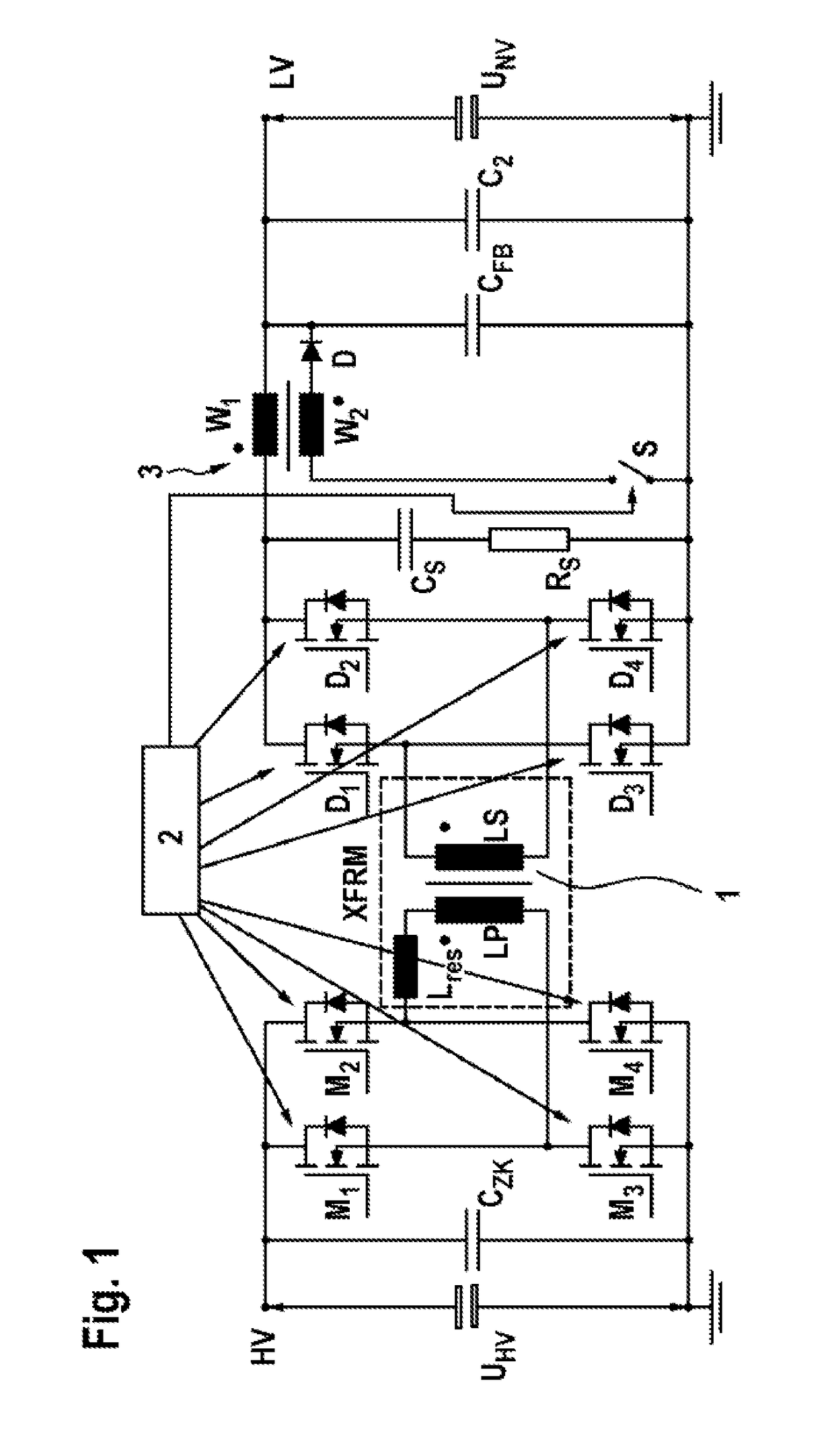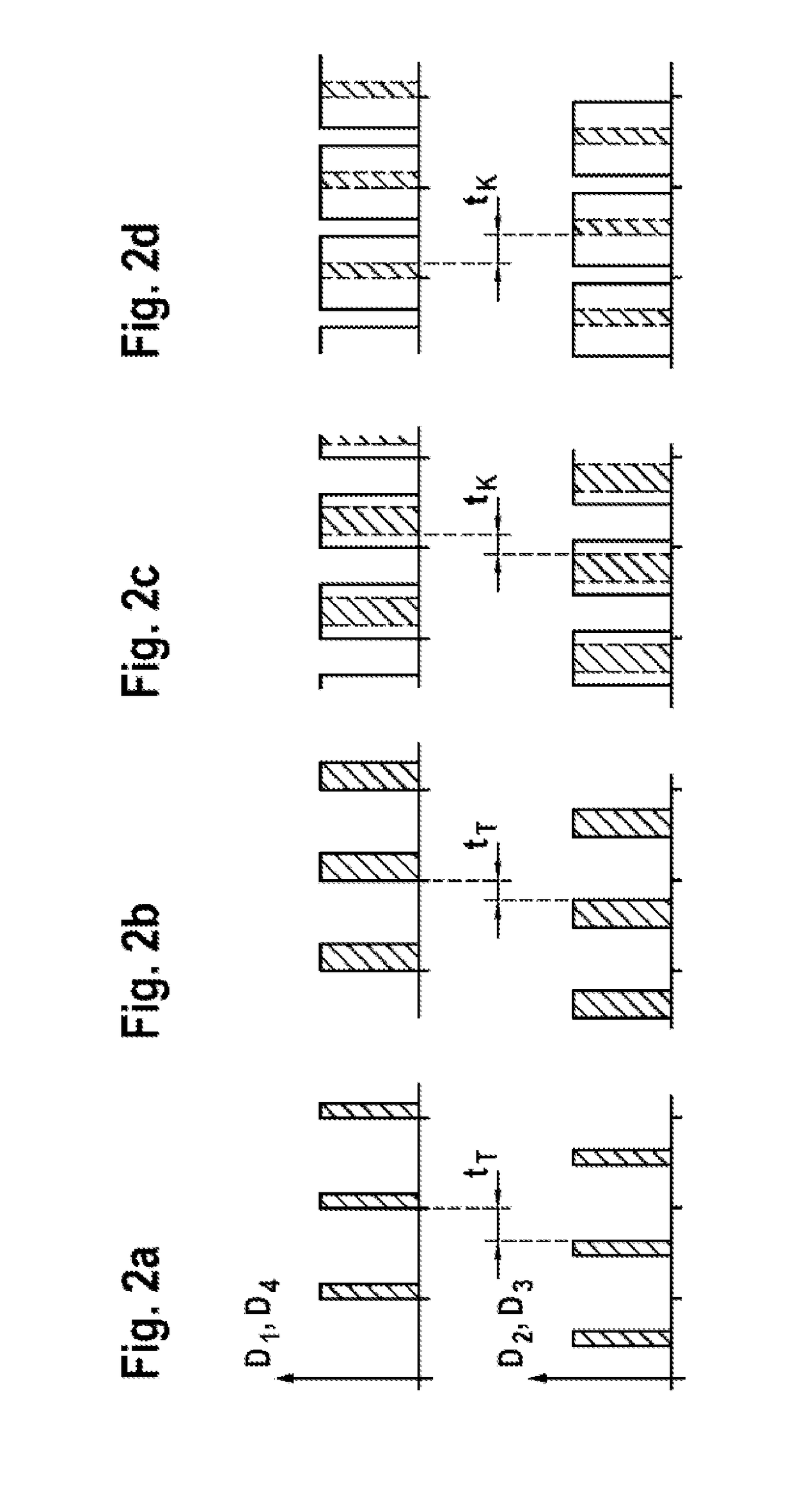Bidirectional dc/dc converter and method for charging the intermediate circuit capacitor of a dc/dc converter from the low-voltage battery
a dc/dc converter and intermediate circuit technology, applied in battery/fuel cell control arrangement, process and machine control, instruments, etc., can solve the problems of high current flow and rapid increase of current, and achieve the effect of smoothing voltage spikes
- Summary
- Abstract
- Description
- Claims
- Application Information
AI Technical Summary
Benefits of technology
Problems solved by technology
Method used
Image
Examples
Embodiment Construction
[0032]FIG. 1 shows the circuit of a single-phase full-bridge phase-shifted (FBPS) DC / DC converter, which is one possible type of converter in which it is possible to charge the intermediate-circuit capacitor CZK from the low-voltage battery UNV, starting from the voltage of zero volts, via modifications which will be described in detail below. However, the modifications may be used on any forward converter having galvanic isolation and a current-fed high-voltage intermediate circuit, for example, with push-pull converters or multilevel converters.
[0033]The FBPS converter depicted in FIG. 1 comprises a transformer 1 which, in normal operation, is fed by the high-voltage battery UHV which is connected to the terminal HV. Switches M1 to M4 switch this voltage at a clock frequency of several kHz, with alternating signs, to the primary winding of the transformer 1, whereby its core, alternating periodically, is magnetically charged. Thus, by means of a control device 2, the switches M1 a...
PUM
 Login to View More
Login to View More Abstract
Description
Claims
Application Information
 Login to View More
Login to View More - R&D
- Intellectual Property
- Life Sciences
- Materials
- Tech Scout
- Unparalleled Data Quality
- Higher Quality Content
- 60% Fewer Hallucinations
Browse by: Latest US Patents, China's latest patents, Technical Efficacy Thesaurus, Application Domain, Technology Topic, Popular Technical Reports.
© 2025 PatSnap. All rights reserved.Legal|Privacy policy|Modern Slavery Act Transparency Statement|Sitemap|About US| Contact US: help@patsnap.com



